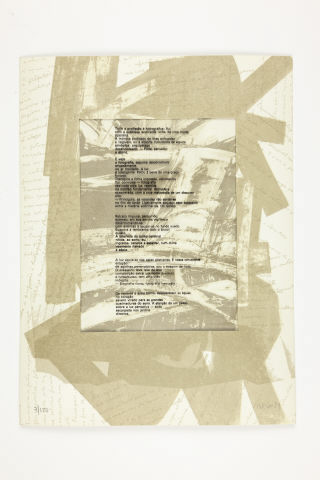
João Vieira
Kodak
Vidago, Portugal, 1934 – Lisbon, Portugal, 2009
João Vieira shortly engaged in the picturesque scenes of neo-realism whilst studying at the Fine Arts School in Lisbon (1951-1953), but dissatisfied with official education and the dictatorship’s aesthetic impositions, he decided to quit painting altogether and sought refuge in the extreme north of Portugal. When he returned to Lisbon and to painting, two years later, he immediately started to exhibit and joined the Grupo do Café Gelo (1956), an environment of literary meetings and political opposition, whose artistic camaraderie became pivotal to Vieira’s future, given his close and creative relation with poets such as Hélder Macedo, Mário de Cesariny or Herberto Hélder – of whom he illustrated, for instance, Kodak (1984) –, and visual artists such as José Escada, René Bértholo and Gonçalo Duarte, with whom he shared a studio above the Café Gelo and founded, shortly after, the KWY group in Paris – further joined by Lourdes Castro, Christo and Jan Voss. In the French capital, João Vieira attended Henri Goetz’s popular course at the Académie de la Grande Chaumière, but it was the direct contact with artists that enabled him to assimilate a heterogeneity of abstract languages, hitherto unavailable in Portugal, in the field of painting. The first decisive encounter took place with the art informel experiments of Vieira da Silva and Arpad Szenes, who would be his tutor when he received a scholarship from the Calouste Gulbenkian Foundation (1959-1960), besides acquainting himself with members of the Spanish group El Paso, in particular Millares and Antonio Saura – to whom he dedicated António (1963). It was, however, Dubuffet’s gesturalist painting that left a more lasting impact on his work. João Vieira hence swapped the brush for a palette knife so as to get new textures in canvases that, detached from the initial figuration, drift towards the French Lettrisme and his studies in calligraphy, thus crowning an interest in the literary world and in the articulation of word and image.
The accumulation of diversified visual experiences and his nomadism throughout different European cities originated a very peculiar idiosyncrasy in Vieira’s oeuvre within the Portuguese context, as could be seen in his first solo exhibition of painting (Galeria Diário de Notícias, 1959) during a brief stay in Lisbon, where the experimentation of writing’s pictorial possibilities was unmistakable from analogous works by Ana Hatherly or António Sena. Vieira resumed his itinerancy by going back to Paris (1964) and settling in London afterwards, amidst the Portuguese artistic community (Alberto de Lacerda, Paula Rego, Menez, Bartolomeu Cid, Cesariny, Cutileiro). The immersion in British Pop culture marked Vieira, mostly due to the advent of happenings, whose fusion of music, theatre, painting, cinema, photography and sculpture, prompted him to break out of the delimited territory of painting and drawing, and commit himself to multidisciplinary and experimentalist creations in the following years. When he returns to Portugal, in 1967, he starts working almost exclusively in set design, contracted by the TV network RTP (1968-1972) and for occasional theatre plays (Pinter, Beckett, Brecht, Marivaux, Bulgakov), receiving the Prémio do Círculo de Teatro Latino de Barcelona [Award of the Latin Theatre Circle of Barcelona] (1968)*. Vieira was also a stage director, awarded with the National Prize for Theatre (1971)**, who studied with Józef Szajna in Warsaw’s Theatre Studio (1978-1979). The performative act, characteristic of the redefinition of artistic objects in the 1970s, was imported and assumed by João Vieira when he created some of the first happenings and performances (dubbed by him as “spectacle-actions”) in Portugal, among others in the Judite Cruz Gallery (1970), ending with the destruction of all works exhibited – for which he earned an Honorable Mention in the SOQUIL Award –, or about the human body, as in mamografias (1981-2000), inspired by Venus de Milo’s breasts, or retrieving the typical costumes of Trás-os-Montes, in Caretos (1984), or creating several large-scale three-dimensional letters, always calling for the intertextuality of works and the interference of public. These were some of the experimental coordinates that, between the 1970s and early 80s, took his installations and videos to prominence at the main avant-garde events back then, as in EXPO-AICA-SNBA 72 and 74 or in Alternativa Zero (1977). João Vieira departs for London again (1973), working and researching on theatre and visual arts, and then returns to Portugal (1974) for good, being contracted as designer in a factory of polyurethane foams, FLEXIPOL, until 1975. He thus incorporated this unusual material in the visual arts – and many other materials, with which he persisted in reinventing the painting practices. Established in Lisbon, after the 25th April Revolution in 1974, he devoted himself to teaching painting and to cultural development, as employee of the State Secretary of Culture (1975-1981) in the area of Cultural Action, coordinating the defunct National Gallery of Modern Art in Belém, and as advisor to the State Secretary of Culture, Hélder Macedo (1979-1980), besides working independently with amateur theatre groups (Guilherme Cossoul, among others) and as monitor in the formation of cultural animators to FAOJ and to INATEL. Vieira was also professor of painting at the António Arroio Decorative Arts School in Lisbon (1962-64), at the Maidstone College of Art in London (1965), at the IADE (1971-1972) and the National Society of the Fine Arts (from 1980 onwards) in Lisbon, and taught set design at the National Conservatory in Lisbon (1978-1979).
When approaching the 1990s, João Vieira revisited Portuguese art history, dialoguing pictorially with key-works by Nuno Gonçalves, Francisco de Holanda or Grão Vasco, that he recreated as if they were collages, although, constant to Cesário Verde’s motto “I paint pictures by letters, by signs”***, he resumed his Lettriste paintings and installations after a trip to Macau for the Portuguese Artists show (1991), when he decided to study Chinese characters. Without a particular activity in exhibitions, Vieira’s public art interventions were manifold, as in the decoration of the Eduardo Martins Building in Lisbon (1993), or the creation of azulejo panels for the metro station of Terreiro de Paço, in Lisbon, and Deák Tér in Budapest (1996), rendering Portuguese and Hungarian poems. João Vieira represented Portugal at the 39th Venice Biennale (1980) and participated at SACOM 2 and 3 (1979 and 1980) at the Museo Vostell Malpartida, in Cáceres. After being featured in a major retrospective of the KWY group, at CCB (2001), João Vieira was posthumously distinguished with the Amadeo de Souza-Cardoso Award (2009).
Afonso Ramos
August 2011
* Prize bestowed for the set design in D. Quixote by Yves Jamiaque, staged by Carlos Avillez, in Cascais Experimental Theatre.
** Prize awarded for the staging of Who’s Afraid of Virginia Woolf? by Edward Albee, in Vasco Morgado Company, Lisbon.
*** “Pinto quadros por letras, por sinais”. A verse repeatedly invoked by João Vieira, taken from Cesário Verde’s poem “Nós” [We] (1884).

Kodak
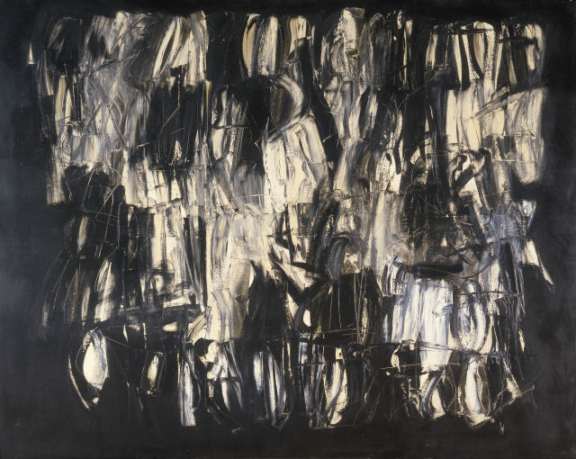
António
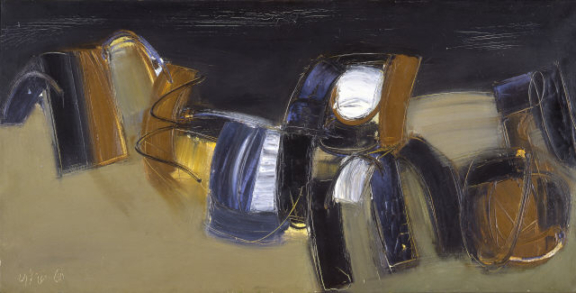
Meu Amor
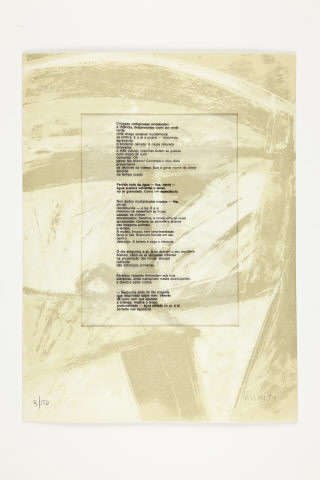
Kodak
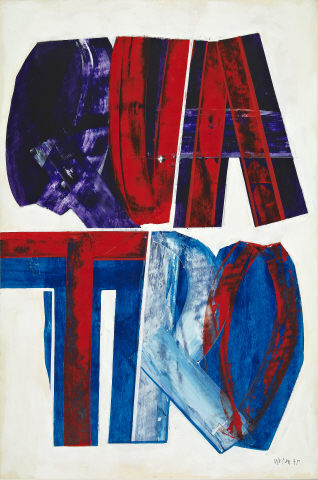
Quatro
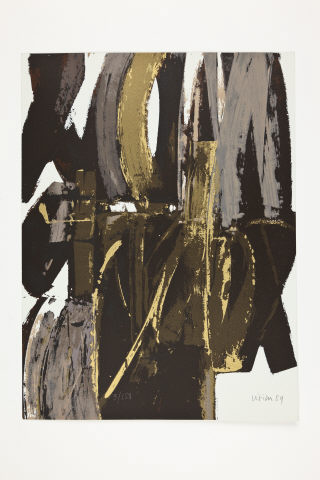
Kodak
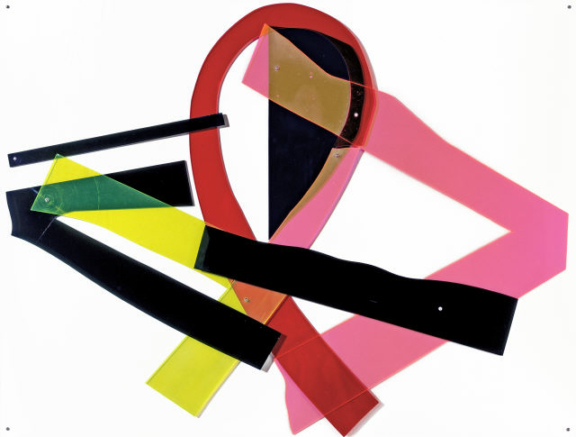
Elo (Assemblage)
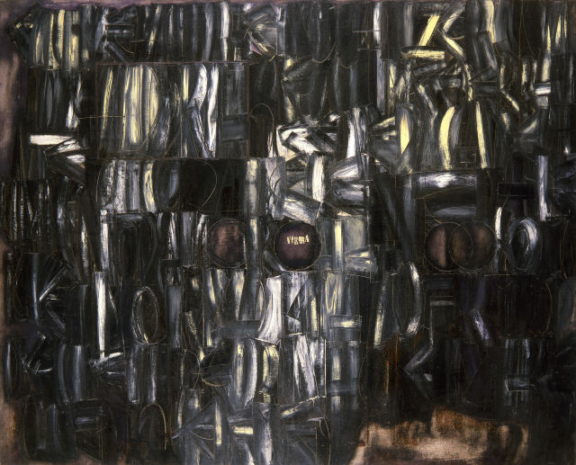
Cidra-Ciúme

Alfabeto I

Vermelho
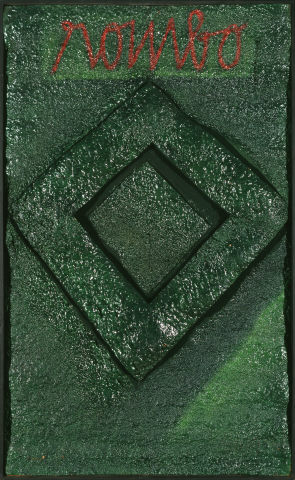
Rombo

Uma Rosa É

Kodak
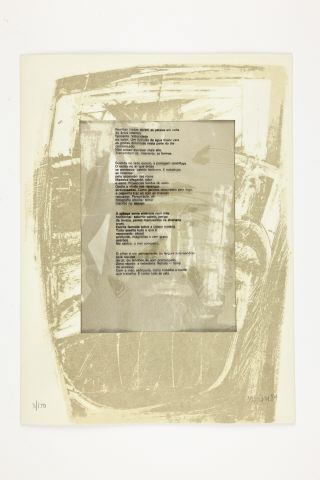
Kodak
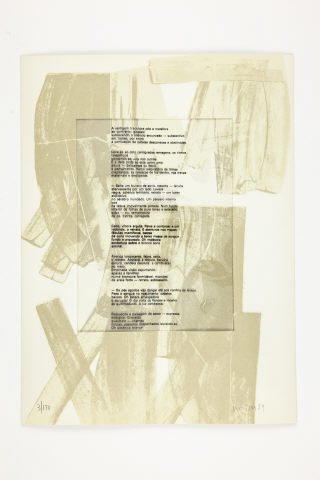
Kodak